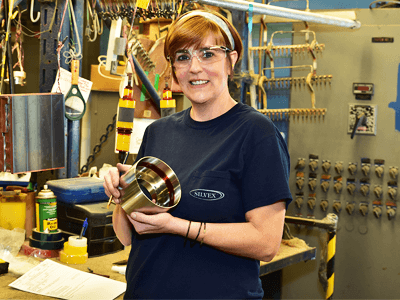Anodizing Process

The anodizing process is an electrolytic passivation process used to increase the thickness of the natural oxide layer on the surface of aluminum parts. Anodizing increases corrosion resistance and wear resistance, and provides better adhesion for primers and glues than bare aluminum. Anodic films can be used for cosmetic effects by applying a thick porous coating that can absorb dyes and it can be used to prevent galling of threaded components. Furthermore, anodized coatings are also non-conductive.
The corrosion resistance of anodizing will decrease with the presence of impurities such as copper, iron and silicon in the aluminum alloy. Anodized coatings have a lower thermal conductivity and coefficient of linear expansion than aluminum and a higher melting point.
The most widely used Anodize specification is Mil-A-8625 which defines three types of aluminum anodize. Type 1 is chromic acid anodizing, Type II is sulfuric acid anodizing and Type III is sulfuric hard anodizing.
The primary advantage of chromic acid anodize is that it is self-healing, has good corrosion resistance properties and will not damage or fatigue the aluminum. Sulfuric acid anodize is inexpensive and can be easily dyed. Hard sulfuric acid anodize has a hardness of up to 70 Rockwell, and it can also be dyed.
Anodizing is used on a variety of aluminum products; aircraft parts, architectural materials, and many consumer products such as flashlights, cooking pans, MP3 players, and in the defense industry on guns, tripods, robotics and other armament components.
To learn more about our anodizing process, please contact us at Silvex today.
